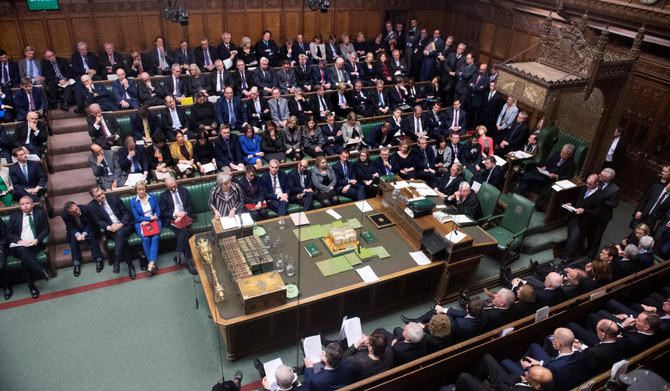Mariana Mazzucato
With voters in 76 countries heading to the polls in 2024, this is a record-breaking year for democracy. Yet it coincides with an alarming rise in right-wing populism, which increasingly blames policies that address climate change for voters’ economic hardships.
Despite the clear potential of green initiatives to boost incomes, productivity and economic growth, the progressive left struggles to articulate a compelling counternarrative. If the false dichotomy between economic prosperity and environmental sustainability persists, the green transition will lack the political support it needs to succeed. Consider the debate in the UK over the Labour Party’s £28 billion ($35.5 billion) Green Prosperity Plan, which it has presented as a key instrument to “make Britain a clean energy superpower.” Instead of dwelling on the sums being spent, the conversation should focus on what it will take to complete the stated mission. The point is not to throw money at the problem and hope for the best; it is to offer a strategy for mobilizing massive private and public sector investment toward a collective goal.
To make clean energy the engine of its industrial, financial and innovation strategies, Labour needs a new narrative. It needs to show that a mission-oriented government working with businesses to invest and innovate in an outcomes-oriented way will result in new skills, jobs, productivity gains and higher wages. Labour can bolster its case with six arguments. First, there need not be any trade-off between climate action and economic growth. The UK has a huge green industry and capital markets it can tap into with mission-oriented public sector investment. Green industries will be worth more than $10 trillion globally by 2050 and, in the UK, they are growing four times faster than the rest of the economy.
When public investment is guided by a clear mission, it can create new markets, crowd in private investment and increase long-term competitiveness. Germany’s green steel sector is a good example. It owes its growth to the German public bank’s (KfW) green loans program, which helped create an entirely new market for carbon-efficient steel. Second, climate finance represents an investment, not a cost. Mission-oriented policies can generate private sector investment by increasing firms’ productive capacity and spurring cross-sectoral economic activity that will have positive spillovers now and in the future. NASA’s Apollo mission and moon landing required research and development not only in aerospace technology but also in nutrition, materials, electronics and software. Camera phones, foil blankets, baby formula and software are just a few of the hundreds of innovations that still benefit us today.
Strategies to address climate change can recreate this pattern with investments in infrastructure, transportation, agriculture, energy and digital innovation. Countries getting a head start on energy-efficient ways to produce steel and cement and cleaner ways to extract key minerals will become more competitive as green standards are normalized. And a digital economy that helps sectors go green will attract global investment. Likewise, a school meals program that ensures access to healthy, tasty and sustainable lunches for all children would require outcomes-oriented public procurement and cooperation with local green companies across the food supply chain. Third, missions require patient, long-term, risk-tolerant finance that can crowd in other forms of finance and drive transformational changes at different stages of the innovation and business cycle. If structured well, public finance can shape and even create markets by channeling loans, grants, guarantees and debt and equity-based instruments toward companies that are willing to invest in solving specific problems. While often presented as a form of “de-risking,” this term misses the point. These cases call for risk-taking and hence mechanisms for sharing both risks and rewards.
In the case of renewable energy, national development banks around the world have often invested in portfolios with higher-risk technologies that are working their way toward scalable commercialization. By leading on early-stage, high-risk and capital-intensive projects, public finance can function as an investor of first resort, not a lender of last resort, playing a critical role in creating and shaping new green markets. Fourth, public sector capabilities matter. An ambitious national clean-energy mission requires confident, competent and well-equipped national, regional and local governments that work together to deploy tools like outcomes-oriented procurement and investment. To deploy and operationalize a £28 billion climate plan effectively, the UK needs appropriate skills both in green industries and in public sector organizations. Yet many governments, including in the UK, have become over-reliant on big consultancies with extractive business models, resulting in a stunting of state capacity. With Labour having quadrupled its own reliance on consultants, a change of thinking is clearly in order.
Fifth, a green, just transition requires a new social contract, which means redefining the typical partnership between government and business. While profit rates are high globally, investment rates are not, owing to the increasing financialization of both finance and business. In the US and the UK, only 20 percent of finance goes into the productive economy, the rest flows into the more speculative finance, insurance and real-estate domains. In addition to redistributive policies (like a progressive wealth tax), putting public purpose at the heart of the economy requires pre-distributive measures. For example, Labour should embed conditionalities in the Green Prosperity Plan to ensure access to goods and services for consumers or to share profits resulting from public support with a wider range of stakeholders, including workers. Companies receiving government support must commit to reinvesting profits in green innovation and better working conditions and pay. And, as the United Auto Workers’ recent victory in the US shows, trade unions are critical to ensuring that greening the economy results in better skills, and that productivity increases are matched by higher wages.
Finally, the £28 billion plan must be seen as an investment in the country’s financial future. Although public investment may increase the deficit in the short run, economic expansion that greens productive capacity in manufacturing and services will ultimately reduce the debt-to-gross domestic product ratio. The fiscal austerity of the past 15 years weakened not only the social fabric, but also the economy and its growth potential (as did Brexit, which reduced the market size for UK industry). By creating a dynamic hub of green investment and innovation across the economy, including public services like sustainable mobility, a mission-oriented government can improve the country’s fiscal position over the long term. For both the climate and society, inaction is the costlier option. Sources of finance include UK green gilts – government bonds specifically designated for green initiatives – as well as proposed reforms to the UK’s outdated public accounting rules. Currently, loans extended by state investment banks are counted as part of the overall public debt, while the returns they generate for the state go untallied. This quirk artificially inflates public debt figures. Simply by aligning its rules with global standards, the UK could leverage public banks, like the UK Infrastructure Bank, more effectively. With so many elections this year, a progressive green narrative is imperative. To persuade voters, it must show how new public and private investment aimed at socially and environmentally beneficial outcomes can create an economy-wide growth multiplier, good for people and planet alike.







